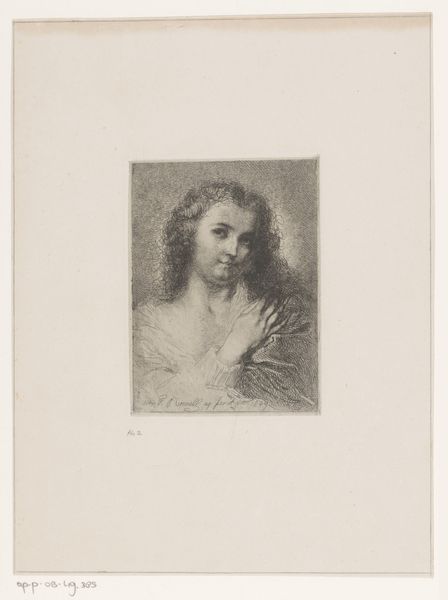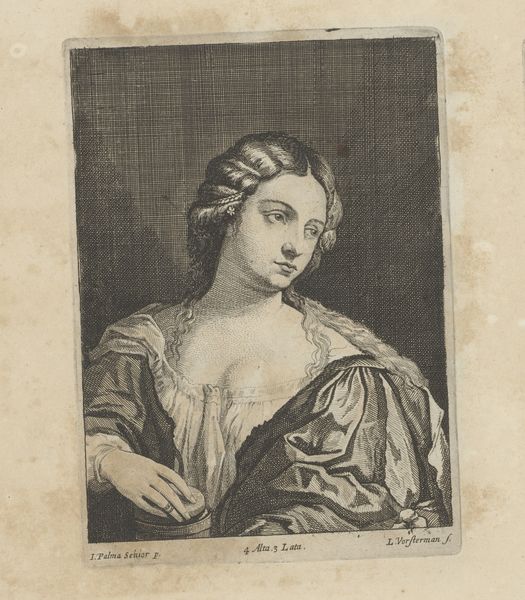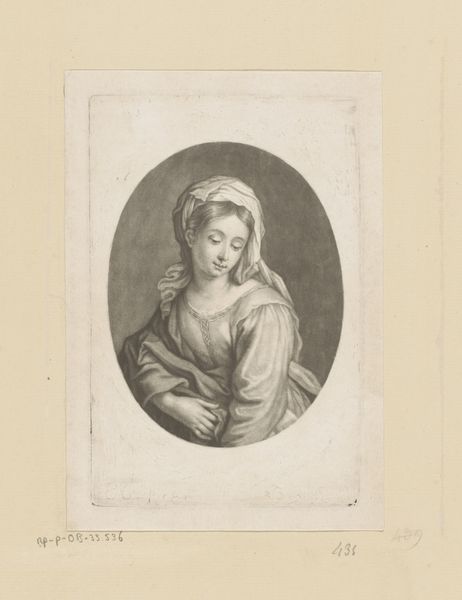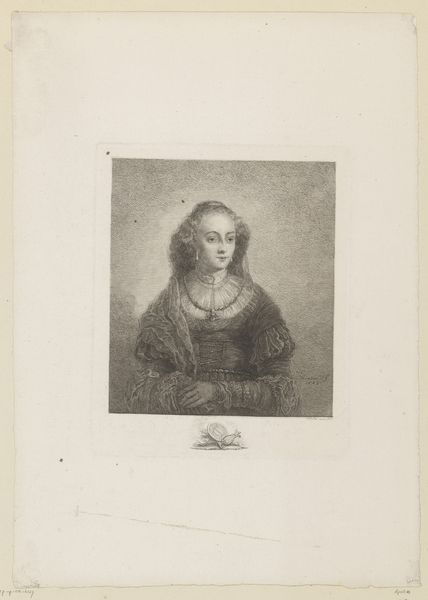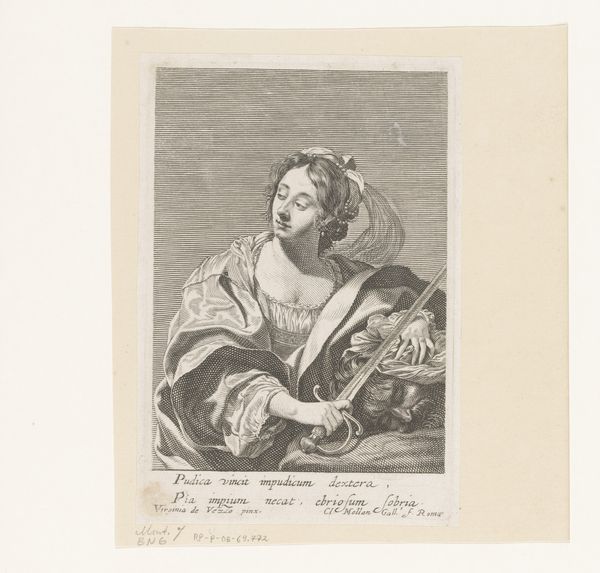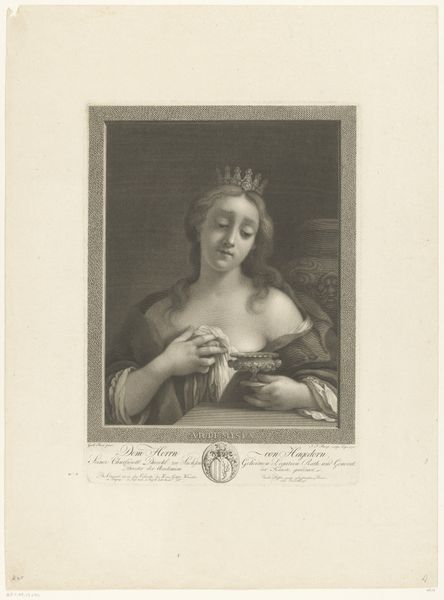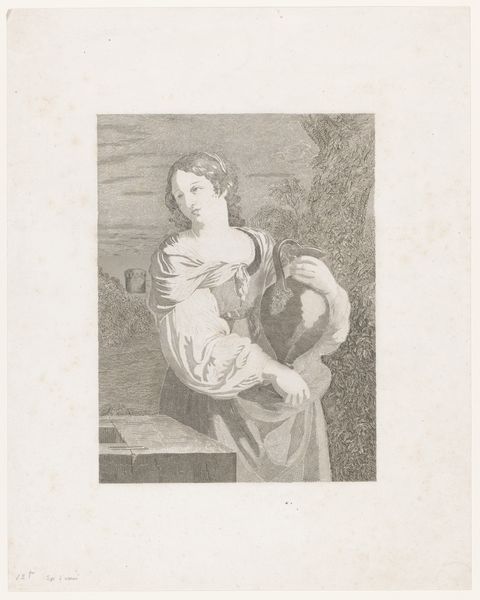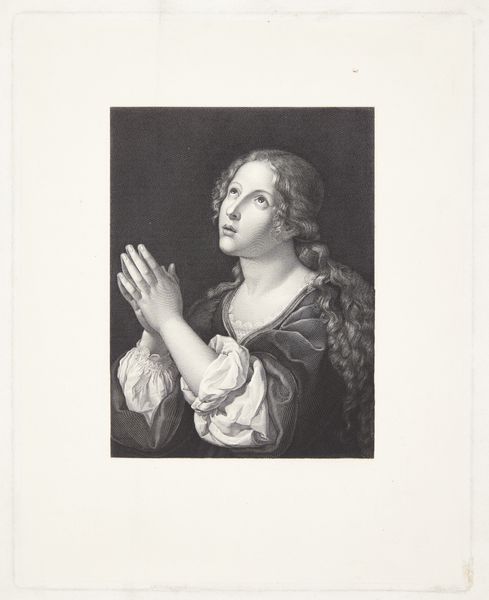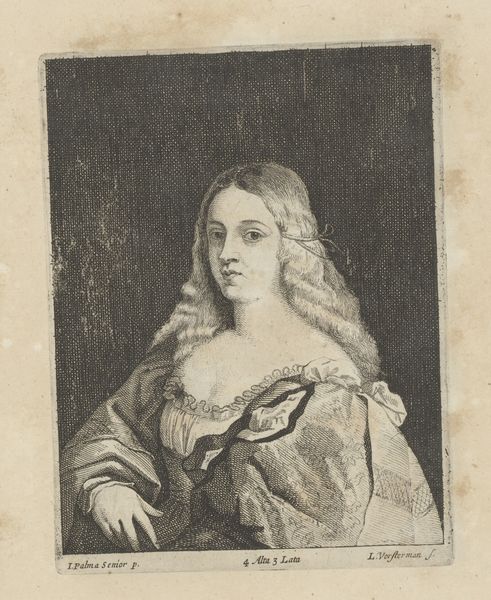
Dimensions: height 221 mm, width 191 mm
Copyright: Rijks Museum: Open Domain
Editor: Here we have Johann Heinrich Lips' "Artemisia met de as van haar man Mausolus in een beker," created in 1781. It's an engraving, and the queen's somber expression gives the piece a heavy, almost mournful feeling. How do you interpret this work? Curator: The means of production are central to this image. Lips uses engraving, a readily reproducible medium, to disseminate a particular image of power and grief. It links artistic creation directly to the broader sphere of consumption and circulation of ideas about status, loss, and mourning. The printing press democratized imagery, making what was once confined to painted portraits accessible. Editor: So the print medium itself changes the meaning? It's not just about portraying Artemisia? Curator: Exactly! We must consider how Lips, through the very act of making an easily reproducible print, reshapes and disseminates the story of Artemisia. Think about who the likely consumers of these prints would have been: aspiring members of the merchant class who sought visual culture in a way never before seen. This work embodies grief but more accurately signals something about burgeoning social status achieved via consumer access to imagery. The materiality and reproducibility challenges traditional aristocratic forms of mourning and memorializing grief through painting or sculpture that would exist singularly for the elites.. Editor: That’s a fascinating perspective. It’s easy to get caught up in the subject and forget about the materials and how they affect the work's impact. Curator: Indeed. And by doing so, we ignore art as a commodity that reflected cultural shifts beyond mere artistic or creative expression. Consider, too, the paper, ink, the very labor required. It asks how notions of mourning are produced, commodified, and circulated, reaching further than traditional venues of consumption or viewership. Editor: I never thought of engravings having such a socioeconomic story behind them. I will look at prints a bit differently now. Thanks! Curator: Absolutely! Examining the artmaking process illuminates so much more than intention. It's about cultural fingerprints.
Comments
No comments
Be the first to comment and join the conversation on the ultimate creative platform.

